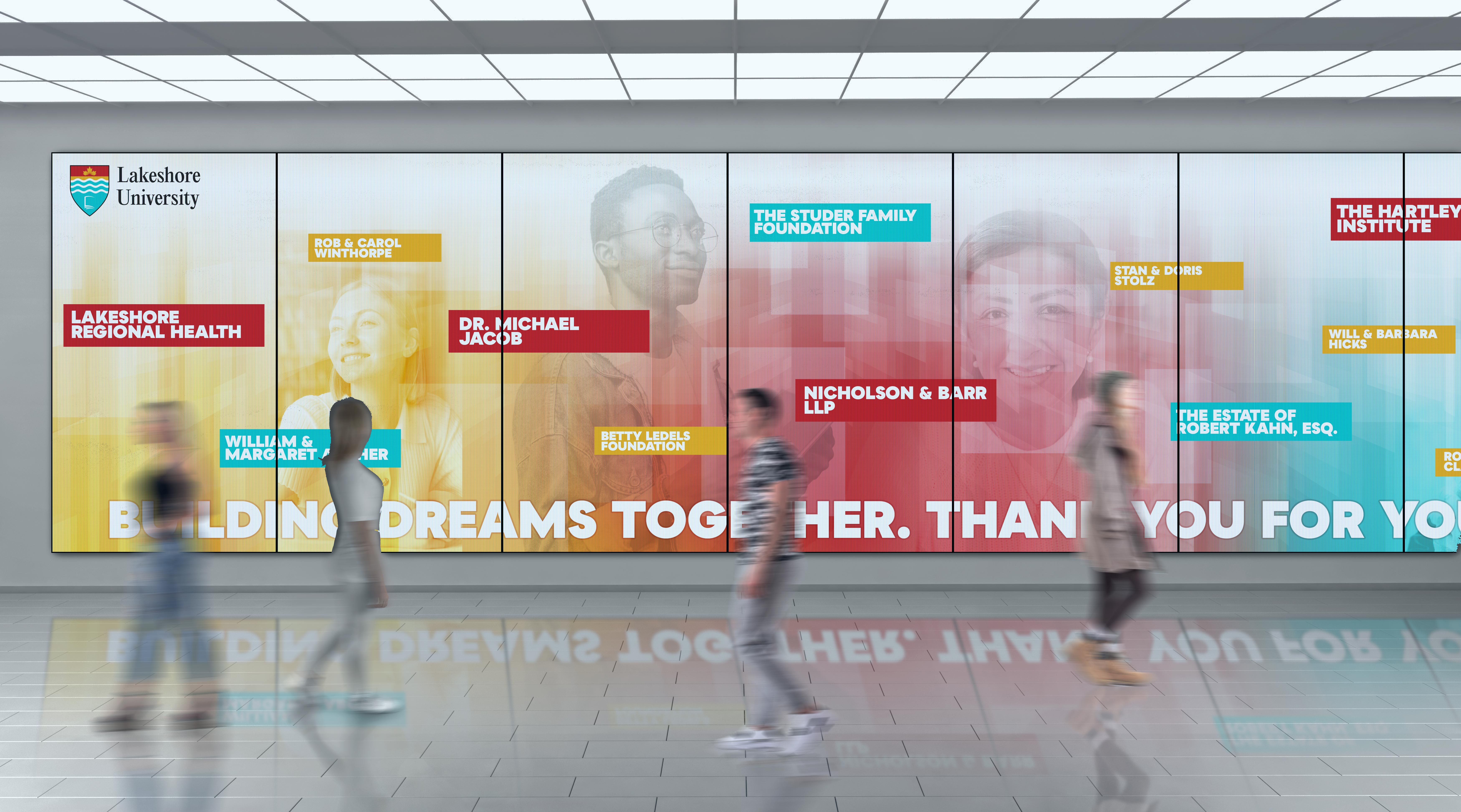Video walls are a popular and effective way to display information, promote products and services, and create an engaging environment for customers and employees. But implementing a video wall can be daunting, with many moving parts. This blog will discuss key considerations such as screen types, processors, digital signage software, mounting, and more.
Purpose and Goals
Before you start, it's crucial to determine the purpose and goals of the video wall. What do you want to achieve with it? Is it for advertising, entertainment, or a monitoring/operations center? Knowing the purpose and goals will help you determine the type and size of the video wall to install.
Screen Type and Resolution
One of the most important considerations for a video wall is the type and resolution of the screens used. Each video wall technology has strengths and weaknesses.
LED screens are bright, energy-efficient, and can be used in various environments. They are an excellent option for outdoor video walls because they are highly visible in bright sunlight. LCD screens have superior color accuracy and are suitable for indoor environments such as retail spaces or corporate offices. OLED screens offer deep blacks and excellent contrast, making them ideal for high-end applications like museums or galleries.
With the recent reduction in the cost of dvLED screens, we are seeing more of this technology being used for mid and low-level applications. As the cost continues to lower and the quality of these displays increases, they'll become the dominant video wall type of the future.
Regarding resolution, the key consideration is the quality of the content you intend to display. HD native display resolutions may be sufficient for basic media playback at a significant viewing distance. However, on the opposite end of the spectrum, UHD and even higher resolution content (such as seen in art installations and high-impact DOOH applications) may require a display compliant with HDR and high ratio chroma subsampling. These applications will likely require a very large dvLED wall (scale up to impress!), with a low pixel pitch (increased definition), high brightness (brighter is often better), and high frame rate (smoooooth).
The good news is that there are products that can match any reasonable budget when considering content quality, viewing distance, audience needs, ROI, and the available physical space.
Video Wall Processor
A key component to successfully running a video wall is the video processor. This device is responsible for processing and displaying the content on the screens. A good processor should also include geometric and color calibration and bezel compensation features. In addition, most video wall manufacturers offer compatible controllers, either of their own design or provided by alternate hardware vendors.
Geometric and color calibration is essential to ensuring that the content adequately fills the display and that the colors displayed on each screen are consistent and accurate. Suppose your video wall is a more traditional implementation comprising individual displays. In that case, bezel compensation is an important feature to look for in a processor. Bezels, the borders between each screen on this older video wall style, can cause the content to appear disjointed if not correctly compensated for. Finally, content management capabilities allow you to easily manage and schedule the content displayed on the video wall.

Digital Signage Software
Digital signage software is a critical part of a video wall. This software manages and schedules content and controls the wall's operation. When choosing a digital signage software solution, it's essential to consider your needs. For example, suppose you're using the video wall for advertising purposes. In that case, you may want a software solution that enables you to easily create and manage ad campaigns. You will also want to ensure the software includes robust proof-of-play logging features. On the other hand, if you're using the video wall for monitoring purposes, you may want a software solution that allows you to easily display and manage real-time data and configure the content layout for maximum operational impact.
Mounting and Installation Considerations
Mounting and installation are crucial considerations for a successful video wall implementation. Proper mounting ensures that the screens are securely and safely installed and that the screens are aligned and calibrated correctly. When mounting screens, you need to consider the weight and size of the screens, as well as the mounting location and airflow. For example, a larger video wall may require a specialized mounting solution, and an outdoor video wall may require additional weatherproofing measures.
Again, most video wall manufacturers offer Commercial Off The Shelf ( COTS) and customized mounting solutions or ensure their products are compatible with industry best practices. Your audio visual integrator will be able to provide excellent engineering and implementation support for your project.
Maintenance and Support
Finally, maintenance and support are necessary for the long-term success of a video wall. Proper care and support will ensure it continues functioning effectively and efficiently over time. Plan for regular maintenance, such as cleaning the screens, replacing parts as needed, and updating software. Ensure you also have a support plan in case of any issues or technical difficulties. This can include a dedicated IT support team or an external service provider. Any effective video wall application will consist of live backup signal processing, media playback equipment, and spare hardware that can be available for timely replacement in case of failure.
Implementing a video wall can be a complex task. However, you can ensure a successful and effective installation by considering the purpose and goals, screen type and resolution, processor, digital signage software, mounting and installation, and maintenance and support. With these considerations in place, you can create a video wall that engages and informs your audience, whether in a retail environment, corporate office, or public space.
